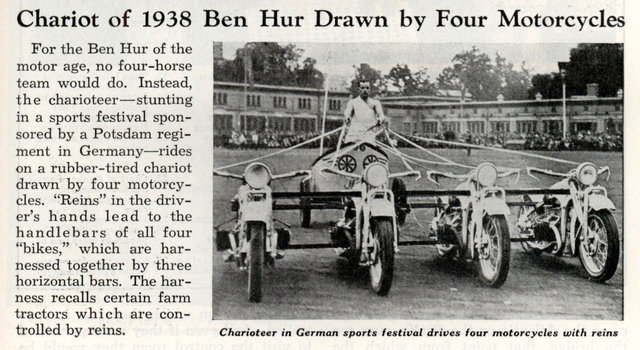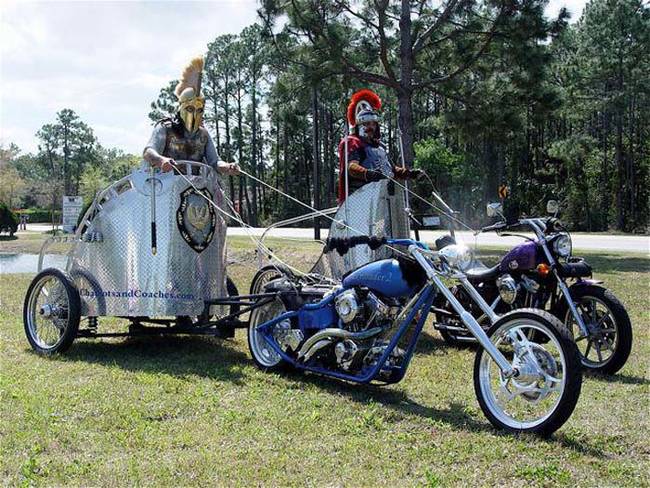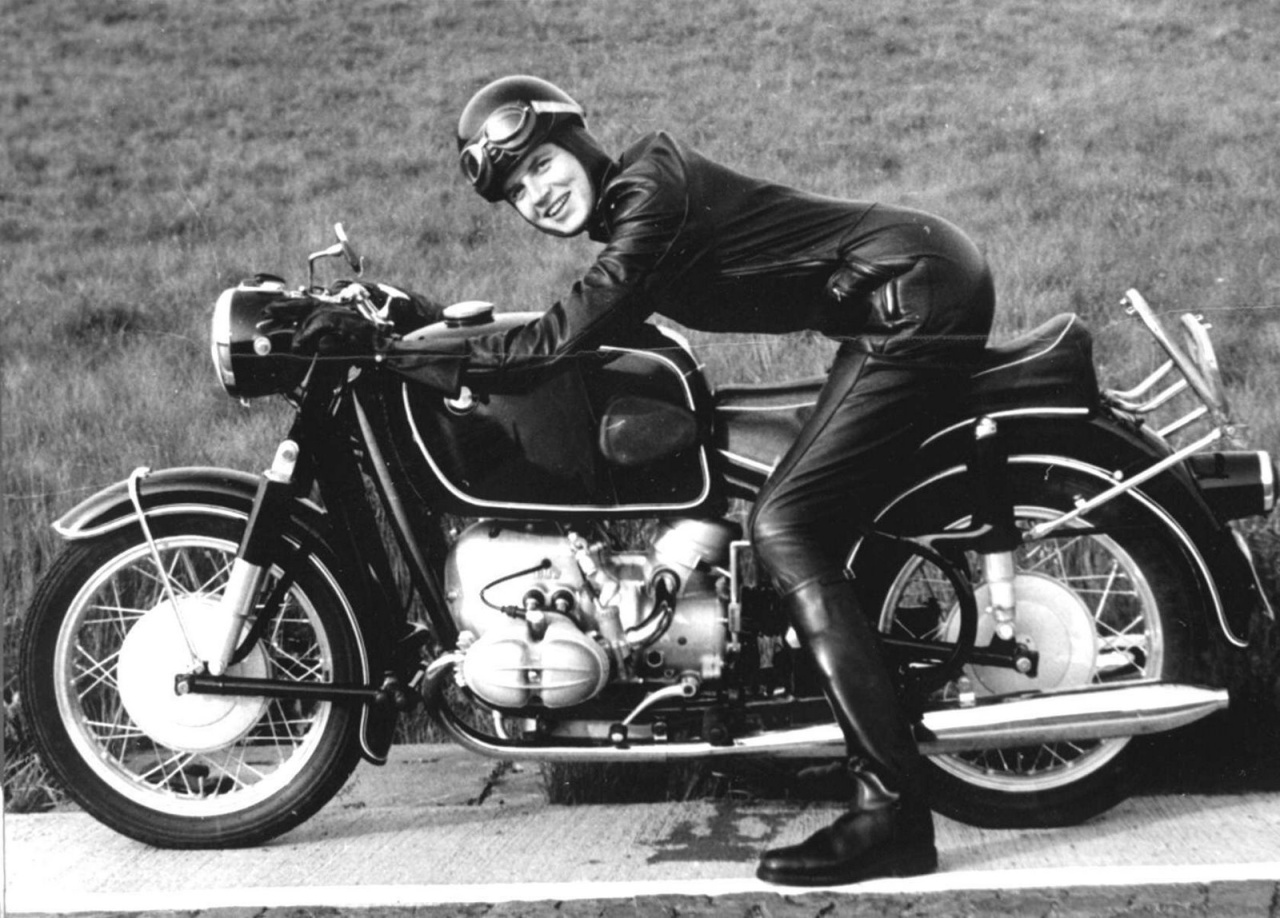Mirrored after ancient Roman chariot races (the kind that tripped horses and sent men flying into the path of oncoming hooves as in Ben Hur), motorcycle chariot races followed the same principle, and the same level of danger and thrill. The sport of motorcycle chariot racing caught on during the 1920s and reached their peak in the 1930s. It’s not quite clear where the sport began: Australia, New Zealand, America, and parts of Europe all claim to have been founders, however an article from the United States in 1922 is the first real record about motorcycle chariot racing.

The first records of the sport indicate that only one motorcycle was being used, often carrying a chariot constructed from large wine barrels. However, the sport since grew in popularity and the amount of motorcycles pulling the chariot grew as well: four motorcycles appearing to be the pinnacle. Early versions of motorcycle chariot races included riders on the motorcycles themselves, simply pulling along the chariot which features a rider dressed in finery befitting the Roman Empire.

However, a majority of the sports’ brief history did not include a rider, with the charioteer driving the motorcycles themselves. This was done using a couple of methods: One method saw the charioteer using a leather chord as reigns which was attached to each individual motorcycles throttle, controlling both motorcycles simultaneously and at different speeds if need be. Other designs included rigid extensions that came off the handlebars, only allowing the rider to go forward in one gear, with the issue of braking unaddressed.
Although motorcycle chariot racing eventually died out in popularity, there are still some enthusiasts around trying to keep the sport alive, even using choppers as their steel horses.



